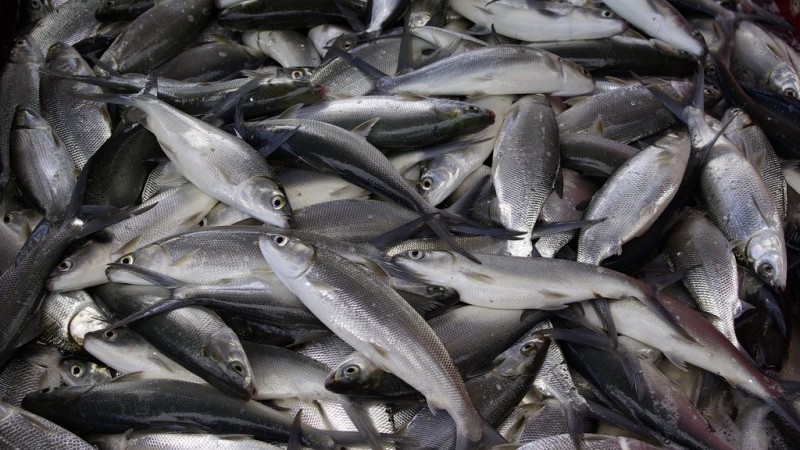British scientists have identified a paradox in research on the impact of extra carbon dioxide on the world’s oceans.
There is no doubt that along with global warming the oceans are becoming more acidic, and that this badly affects fish, corals and shellfish.
But researchers have found that “closed system” fish farmers who recycle the same water are already keeping fish healthy at carbon dioxide concentrations higher than predicted for climate change.
And fish farming is the fastest growing branch of the food industry, increasing at more than 8% a year for the last 30 years.
Weekly briefing: Sign up for your essential climate politics update
So, argue Robert Ellis and Rod Wilson of the UK’s University of Exeter, and Mauricio Urbina of the University of Canterbury in Christchurch, New Zealand, in the journal Global Change Biology, there are new questions to be resolved. Can ocean fish adapt to ocean acidification? Or is the species selected as suitable for fish farming just naturally more tolerant of the conditions that the world will face by the close of the century?
“Aquaculture may provide an ‘accidental’ long-term experiment that can help climate change predictions,” Ellis says. “There is the enticing possibility that fish and shellfish previously grown in high CO2 aquaculture conditions over multiple generations can offer valuable insights regarding the potential for aquatic animals in the wild to adapt to the predicted further increases in CO2.”
Atmospheric concentrations of CO2 were historically around 280 parts per million, and they are now 400ppm. Independent teams of researchers have established acidification as a threat to coral reefs and to shellfish larvae, and as an environmental factor that seems to affect the physiology, sensory systems and even the survival mechanisms of some adult fish. Even shrimps in the south of Australia have started to signal increasingly noisy responses to changing ocean conditions.
But, the Exeter scientists say, fish farms that recirculate their water – in the way that domestic aquariums filter and recycle the same water – are already successfully keeping fish at water chemistries considerably higher than those expected at the end of the century.
There are differences: salmon, sea bream and cod in fish farms face no natural predators, their health is constantly monitored and food arrives whenever they need it. Whereas, wild species are overfished, their waters are polluted, their habitat degraded and the climates in which they evolve are changing. So the lessons from aquaculture don’t answer questions: they raise even more.
However, the scientists argue, this presents a research opportunity. Fish farmers and marine biologists could learn from each other. “Combining the knowledge that has arisen from climate change and aquaculture research is crucial to allow a more in-depth understanding of the physiological and ecological responses of aquatic animals to elevated in CO2,” they write.
And this could certainly pay off for fish farmers too.
Wilson says: “Our research will allow fish farmers to optimise conditions, and specifically in CO2 levels, to improve the growth and health of their fish, and the profitability and long-term sustainability of the industry. This is really important given that aquaculture is the only way we will increase seafood production to feed the growing human population, particularly as wild fish stocks are overexploited.”
This article was produced by Climate News Network
